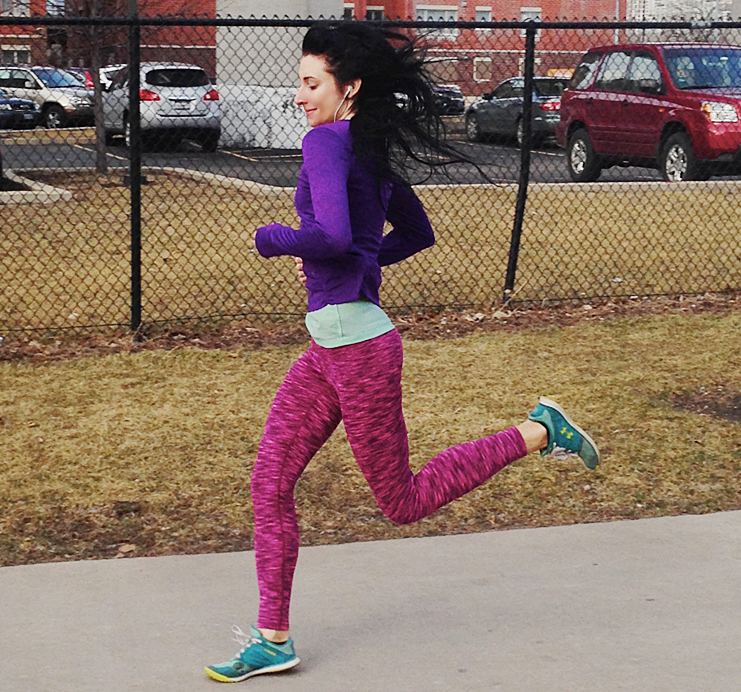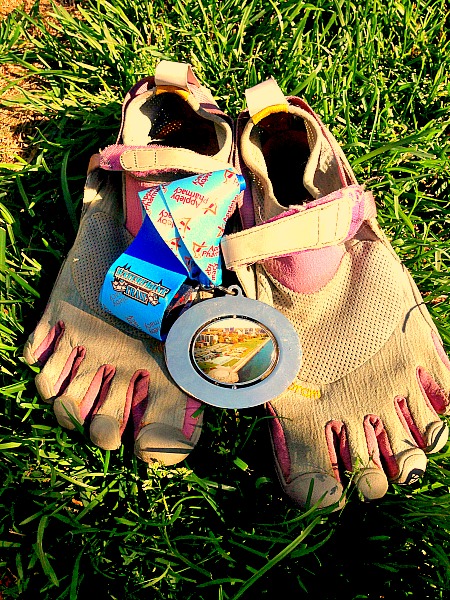Because the forefoot is the first part of the foot to strike the ground in forefoot running, it is wrongfully assumed that landing on the forefoot during running would dramatically increase forefoot plantar pressure and therefore, it would be much easier to suffer a broken metatarsal.
Forefoot running, if learned properly and in the proper shoe, does not cause metatarsal injury because it does not increase forefoot plantar pressure as once believed, according to experts.
Forefoot Running Does Not Increase Risk of a Broken Metatarsal
A study by Warne et al., (2014) found with proper instruction on technique, heel strike runners who learned forefoot running in pure minimalist running shoes had reduced heel pressure and surprisingly, the reductions in heel pressure did not increase plantar pressures in the forefoot, suggesting that a runner has no greater risk of metatarsal injury if they switch from heel striking to forefoot running.
For years, investigators believed that forefoot running increased plantar pressures in the forefoot, for obvious reasons: the balls of the foot is the part of the foot to make initial contact with the ground; it was reasonably assumed that this caused a rapid increase in forefoot pressures. But, this was not observed in the present study.
Why Forefoot Running Did Not Rise Forefoot Plantar Pressure
The only explanation that made any sense as to why forefoot plantar pressures didn’t spike was due to increased stride frequency.

Remember, the runners in the study were heel strikers who wore the traditional running shoe and transitioned to forefoot running under the guidelines of a definitive forefoot running technique protocol which emphasized reducing stride length and cadence.

Evidence shows that the body has a natural tendency to increase stride frequency as a strategy to reduce loading and impact in forefoot running, especially under barefoot or pure minimalist shod conditions.
The finding implicates that proper forefoot running, whether pure minimalist or barefoot, introduces enormous potential for injury prevention through enhancing sensory feedback of the plantar surface.
This is how the body ‘feels’ the interaction between the foot and the ground, prompting active changes in motor control to attenuate impact.
More Great Reads on Forefoot Running:
- Difference Between Heel Strike and Forefoot Strike
- Forefoot Striking Safer Than Heel Striking
- Toe Running Causes Injury
- Achilles Tendon Force not Greater in Forefoot Running
References:
Warne et al. A 4-week instructed minimalist running transition and gait retraining changes plantar pressure and force. Scand J Med Sci Sports, 2014; 24:964–973.
Hobara et al. Step frequency and lower extremity loading during running.Int J Sports Med, 2012:33(4):310-13.
Bretta Riches
BSc Neurobiology; MSc Biomechanics candidate, ultra minimalist runner & founder of RunForefoot. I was a heel striker, always injured. I was inspired by the great Tirunesh Dibaba to try forefoot running. Now, I'm injury free. This is why I launched Run Forefoot, to advocate the health & performance benefits of forefoot running and to raise awareness on the dangers of heel striking, because the world needs to know.
Latest posts by Bretta Riches (see all)
- Can You Run In Barefoot Shoes? Yes, But DON’T Heel Strike! - 21/07/2024
- Why Cushioned Running Shoes Are Really Bad for Your Feet - 19/07/2024
- Do Cushioned Running Shoes Cause Injuries? - 17/07/2024


Leave a Reply